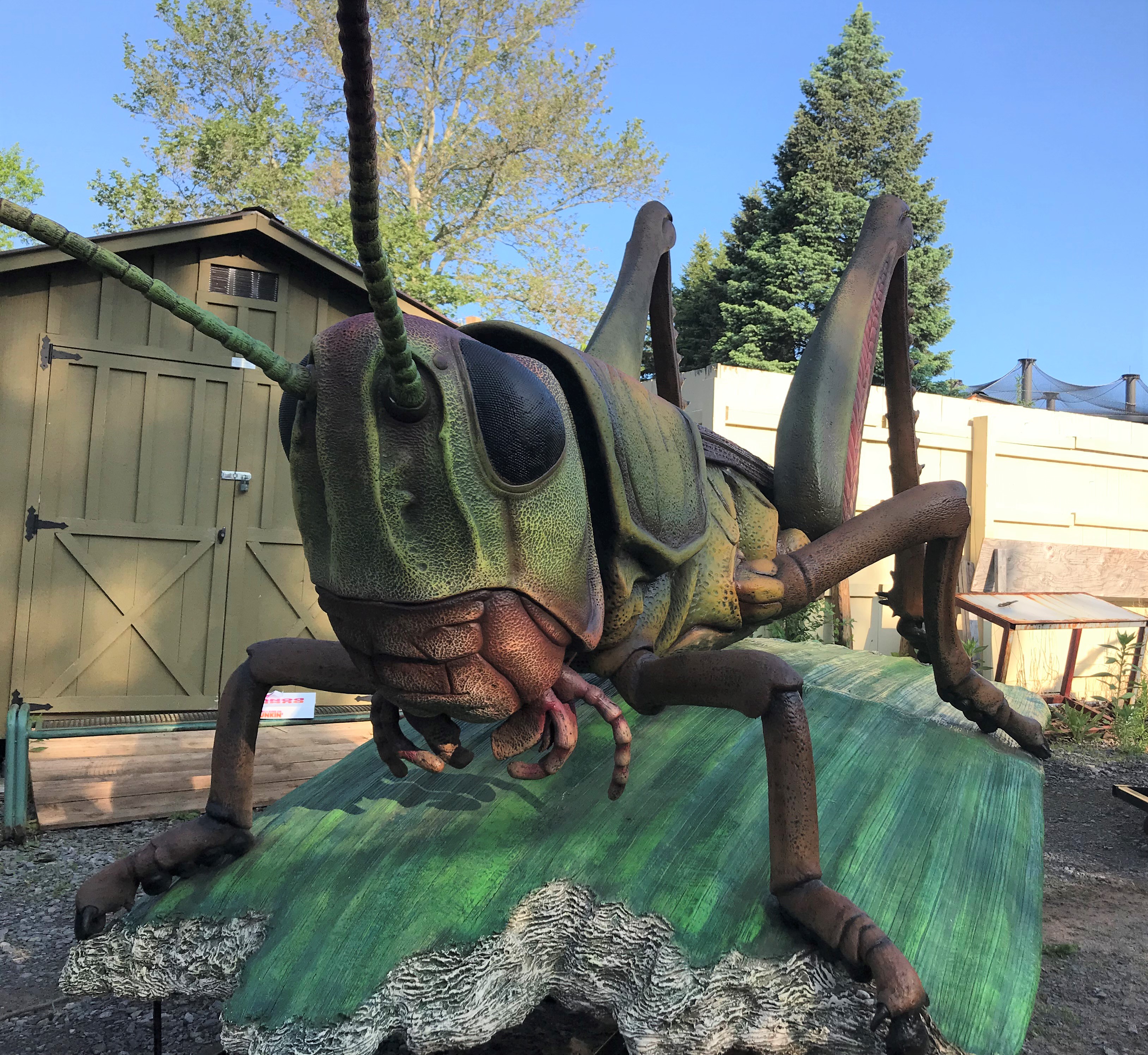Big Bugs! – a summer exhibit of seven giant animatronic insects – descended at the Rosamond Gifford Zoo today. The immense invertebrates arrived on a tractor-trailer from Billings Productions in Allen, Texas, early Monday to take up residence on a wooded section of the zoo’s Wildlife Trail for the summer.
The exhibit, presented by the Friends of the Rosamond Gifford Zoo, will enhance the zoo experience, educate and entertain visitors through Labor Day, said Friends of the Zoo President Janet Agostini. The exhibit is included with zoo admission, which is free for zoo members.
“Our Big Bugs are here to serve the same purpose as our dinosaurs did last summer – to spark interest in science and natural history, especially among our younger guests,” Agostini said. “A larger-than-life look at some of our planet’s smallest residents might even inspire future entomologists.”
The bugs will remain stationary until June 12, when zoo members will get to see them “come alive” in a special preview during the zoo’s Member Appreciation Night. After that, they will be on and moving daily through September 2.
Agostini thanked the Friends of the Zoo board and supporters for bringing the exhibit to the zoo and zoo partner C&S Companies for providing the equipment and crew to unload and stage the bugs on the Wildlife Trail.
The featured creatures are:
- Seven-Spot Ladybird (Coccinella septempunctata) Seven-spotted ladybirds, aka ladybugs, are usually red or orange with three spots on each side and one in the middle. They have a black head with white patches on each side.
- Madagascan Sunset Moth (Chrysiridia rhipheus)The Madagascan sunset moth is considered one of the most impressive and colorful day-flying moths. Ribbon-like scales on the moth’s wings scatter light to create iridescent blue, green and red markings.
- Blue-Eyed Darner (Rhionaeschna multicolor) The blue-eyed darner is a dragonfly found in western North America and in Central America as far south as Panama. They may be nature’s most effective hunter, with a mid-air capture rate of 95 percent.
- Bombardier Beetle (Brachinus) Bombardier beetles have a defense mechanism that gives them their name: when disturbed, they eject a hot poisonous chemical spray from the tip of their abdomen. The 7-foot specimen at the zoo will spray water.
- Meadow Grasshopper (Chorthippus parallelus) Grasshoppers have large compound eyes with a broad field of vision that can detect movement, shape, color and distance. A large grasshopper can jump about a meter without using its wings.
- Red-Tailed Bumblebee (Bombus lapidarius) Red-tailed bumblebees typically appear in June, July and August. Bumblebees are very important in plant pollination. For many species of plant, only bees and butterflies have the capacity to pollinate them effectively.
- Orb-Web Spider (Araneidae) Orb-web spiders are three-clawed builders of flat webs with sticky spiral silk to capture prey. This spider will devour its entire web, including any caught insects, every evening and spin a new one daily.
The Rosamond Gifford Zoo is Syracuse’s accredited member of the Association of Zoos & Aquariums , the gold standard for animal care, conservation education and guest experience. For information on zoo events, visit syracusezooevents.org.


